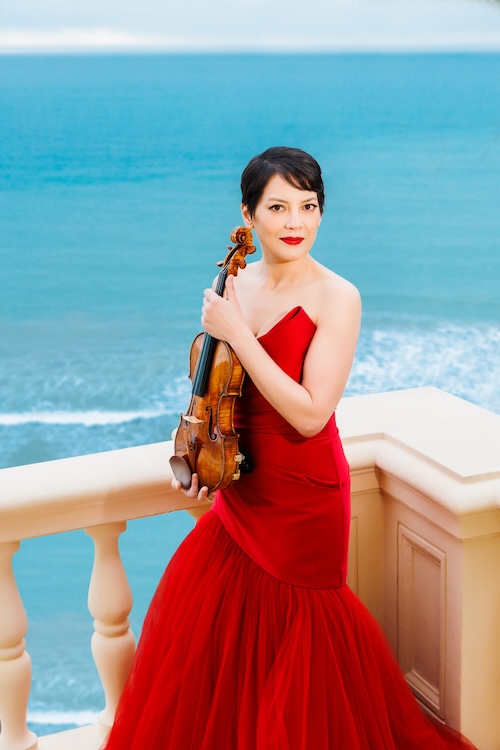Utah Symphony wraps season with a fizzing Latin concerto and an American classic

This weekend the Utah Symphony closes out its Masterworks series for the season with a program that features music by two well-known Americans and a work by Mexico’s preeminent contemporary composer.
Receiving its Utah Symphony premiere is Fandango by Arturo Márquez. The work is a three-movement violin concerto written in 2021 for Anne Akiko Meyers, who is also this weekend’s soloist.
Each of the movements is grounded in Latin rhythms and Latin-inspired melodies. At Friday’s performance, Meyers and guest conductor Giancarlo Guerrero, exhibiting a finely tuned collaboration, emphasizing the rhythmic vitality and warm lyricism of the music.
In the opening movement, the music alternates between tender melodicism and sporadic bursts of percussive energy. Meyers brought out the smooth lyricism in the lyrical sections with her fluid playing, while in the more robust passages she played with exuberant passion. Guerrero provided solid accompaniment that mirrored Meyers’ playing.
The lengthy first movement ends in a frenzy of brass and percussion, to the point that at the end a large number of those in the audience sprang to their feet in boisterous applause. When the applause finally died down, a smiling Meyers told everyone, “There’s lots more.”
The slow movement is a lush dance, done in the style of a chaconne, with a tango bass line. Meyers and Guerrero underscored the sensuous character of the music with their well-crafted reading that brought out the lyricism of the principal melody. There is a more dramatic middle section which has a robust version of the principal tune, but it quickly returns to the swaying rhythms of the opening.
The finale is the most energetic of the three movements and is also the most virtuosic for the soloist. Meyers acquitted herself wonderfully in this technically challenging movement, moving effortlessly between the bold musical statements and the contrasting soft lyrical passages. Guerrero once again showed himself to be in sync with Meyers, allowing the soloist to shine in the crisp interplay between her and the orchestra.
After intermission Guerrero led the orchestra in a dynamic reading of Copland’s Symphony No. 3.
The Third stands as one of the most iconic Copland scores. Even though it is not a programmatic work, the Third is still quite descriptive and one can visualize a vast American landscape as vividly as in any of his Western ballet scores. In each of its four movements Copland paints a striking aspect of American life, which Guerrero and the orchestra clearly captured, giving the audience a broad picture that was nuanced and detailed.
What gives the Third even more power is the fact that Copland incorporated his celebrated Fanfare for the Common Man in the fourth movement. At first it’s presented simply by the flutes, then the brass and percussion take over and play it in its original version. After that it becomes the focal point of the movement in various iterations. There is contrasting material interspersed throughout but the movement is solidly grounded in the fanfare theme.
Guerrero elicited precise playing from the orchestra in his well-defined and articulated interpretation that was both bold and effusive. But he also brought subtle nuances to his account of the contemplative third movement, which featured a lovely solo by principal flutist Mercedes Smith.
The concert opened with Jennifer Higdon’s Fanfare Ritmico in its Utah Symphony premiere. The short piece is a noisy wild ride for the orchestra and the players gave a supercharged performance under Guerrero’s direction.
The program will be repeated 7:30 p.m. Saturday. utahsymphony.org